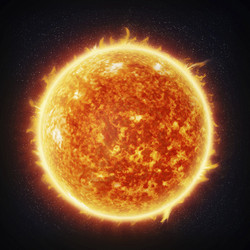Peak bagging for asteroseismologists
The basic principles of asteroseismology are similar to those developed by Earth seismologists. Different oscillation modes – driven by turbulence or gravity – penetrate to different depths inside a star. The observed frequency spectrum, when carefully analysed, can reveal the stellar interior. Studying these pulsations is the only available means to derive the internal structure of stars with high precision. The last decade has seen a revolution in the use of asteroseismology with space missions like Kepler observing hundreds of stars with high sensitivity to changes in brightness. This will continue with the European Space Agency’s (ESA) Gaia mission, offering prospects for unprecedented studies of stars not found in Kepler’s field of view. The growing amount of seismic data available from space missions and ground-based observations create new scientific perspectives, with applications addressing a broad scientific community. Within the project SPACEINN (Exploitation of space data for innovative helio- and asteroseismology), scientists joined efforts to exploit the full scientific potential of these asteroseismic data sets. Researchers successfully unveiled a new software tool called Asteroseismic Inference on a Massive Scale (AIMS) that can derive fundamental stellar parameters from a large number of stars. It is based on a grid of evolutionary models generated using another tool. It also matches model parameters to individual oscillation frequencies or spectroscopic parameters such as effective temperature, surface gravity, metallicity, microturbulent velocity and rotational velocity. Another newly developed tool called InversionPipeline can be used to perform multiple inversions using reference stellar evolutionary models selected from various grids. The SPACEINN team also developed software to calculate solar-like oscillation frequencies for 3D model atmospheres ‘patched’ to 1D stellar interior models. The tool was designed to further understand the undesired contamination of the mode frequencies caused by surface layers that are hard to model. Researchers published asteroseismic catalogues listing fundamental properties of solar-type stars observed by NASA’s Kepler and K2 missions, and another one listing activity proxies for solar-type stars that have asteroseismic detections. Until today, 14 scientific papers have been published in peer-reviewed journals. SPACEINN contribution to improving understanding of solar and stellar structure, evolution and activity is expected to promote the use of seismic data to a broader community beyond stellar physics.







